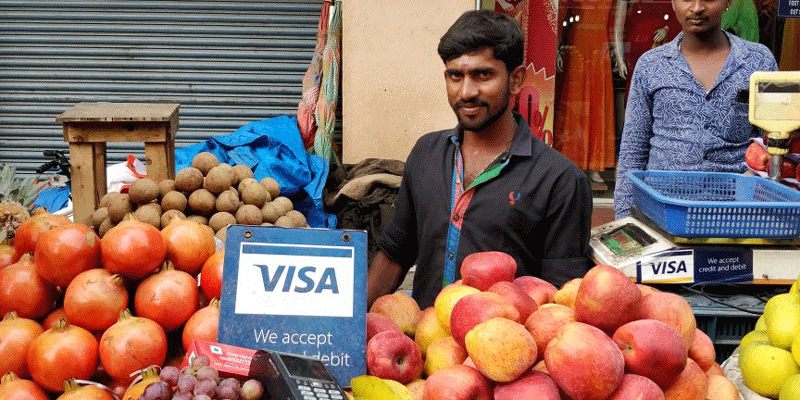12 months on, is cash a fading memory?
November 8 marks a year since the demonetisation of high value notes was announced by the Centre. While the battle to declare the move a success or a failure still rages, one thing that became abundantly clear was that in our country, where 97 percent of transactions took place in cash, cash is losing its place as the king. Since the demonetisation consumers and businesses alike are adapting to the new normal of digital payments.

An interesting pattern emerged following the demonetisation. As expected, in the immediate succeeding months, digital transactions increased owing to the shortage of cash. Debit card usage at Point of Sales surged, growing from 1,406 lakh transactions in October to 3,215 lakh transactions in December. Alternative methods of digital payments, such as Unified Payments Interface (UPI), mobile wallets, as well as prepaid cards grew. RBI reported a 114-percent rise in the number of mobile wallet transactions from the period of October to December 2016.
What is interesting, though, is how the use of digital payments has continued to rise even after cash started making its way back into the system. Provisional data released by the RBI in October 2017 shows that digital transactions rose 13.5 percent to Rs 124.69 trillion in September from Rs 109.82 trillion in August. UPI transactions leapfrogged from just three lakhs in November 2016 to 109 crore in July 2017. Data from the Ministry of Electronics and Information Technology shows that since the launch of the BHIM app in December 2016, transactions amounting to Rs 1,406.89 crore were carried out till March 27, 2017. The conclusion seems clear – digital means are growing even post the initial demonetisation spasm.
Some of the main reasons behind the growth of digital payments are:
Growing acceptance Infrastructure and payment modes
The past year saw an increase in the number of POS terminals to facilitate digital transactions. Banks have now deployed approximately 2.52 million POS terminals across the country. Launch of BharatQR, an interoperable QR code across card networks (Mastercard, Visa, Rupay, Amex) is helping small merchants accept digital payments without having to invest in physical POS devices. Aadhaar Pay will enable merchants to facilitate cashless purchases for consumers with just their fingerprint and Aadhaar number.
As acceptance infrastructure grows consumers too are enabled with multiple payment options. Digital payments are not only restricted to card payments from metros and Tier Icities but are spreading to Tier II and Tier III cities. With UPI and Aadhaar-enabled payments, consumers across Bharat are becoming part of digital India.
Newer entrants in digital payments
There is greater opportunity for digital payment penetration in non-discretionary segments such as education, hospital payments and citizen-to-government payments (e.g. Mumbai traffic fine payments are now digital as are property tax payments in Pune).
Tech giants and popular messaging giants such as Google Tez, Hike are becoming part of the digital payments bandwagon. Facebook’s WhatsApp too has plans to support digital payments on its platform.
Deepening of digital payments in “popular” segments such as e-commerce
Increasing number of consumers are opting for digital transactions for e-commerce payments. Percentage of cash on delivery is showing a gradual decline. This was evident in the recently concluded festive sales of large e-commerce players. Digital payments accounted for nearly 55 to 60 percent of total payments.
Localised solutions
Fintechs are helping digital payments grow by deploying ‘localised solutions’ with apt payment flows for both consumer and merchant, resulting in frictionless payment experience for consumer, thereby increasing adoption.
Further, companies such as VISA and Mastercard, which were traditionally associated with plastic money, are getting into the space of connected devices to expand their digital capabilities and helping in making digital transactions safer and easier.
Role of the regulator
With GST implementation digital transactions have become more acceptable for merchants and other sectors that were traditionally cash-based such as wholesale markets, transportation, services etc., to facilitate better record keeping.
The government has also made digital transactions more attractive with an initial waiver of the service tax on card transactions up to Rs 2,000 and additional discounts on card purchases such as petrol, diesel, and railway tickets. Schemes such as Lucky Grahak Yojana and Digi Dhan Vyapari Yojana that promised cash rewards of up to Rs 340 crore have encouraged smaller value digital payments.
The past year showed us that the reliance on cash was more of a behaviour issue. Consumer behaviour has started changing after the initial shock to the system. It has become clear that Indians are no longer resistant to digital transactions. With growing convenience and security offered by digital mediums, it’s safe to say that while cash will continue to circulate, the future is definitely going to be digital.
(Disclaimer: The views and opinions expressed in this article are those of the author and do not necessarily reflect the views of YourStory.)







